
Photographing in Full Sun (Pt.1)
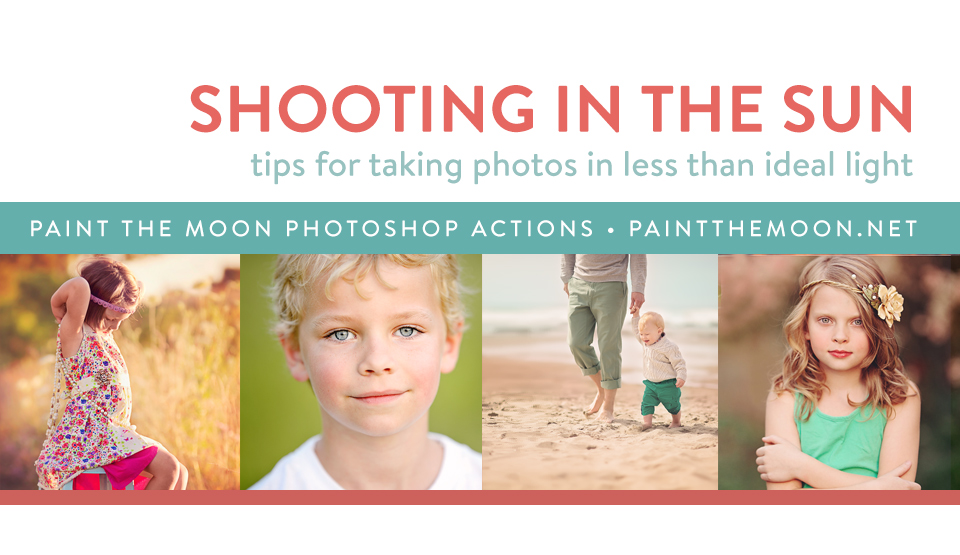
Taking photos in direct sunlight can be a daunting task for many photographers. Sometimes it just can’t be avoided, especially when documenting life as it happens, so it’s best to have a few tricks up your sleeve to make the best of the sunshine when you have to shoot in it.
* Above photos edited with the Photoshop (and Elements) actions from the Luminosity Collection, Picture Perfect Mega Set and the Grace Collection.
Honestly, my first advice for taking photos in direct, overhead sunlight is to avoid it if at all possible. Or if you don’t have another option, try to find ways to manipulate it. Direct sunlight can cause harsh shadows (with intense lines across faces, raccoon eyes, and harsh, unforgiving details), blown out highlights, etc. However, sometimes it just can’t be avoided and I’m happy to share with you some helpful tips to make the most out of those sunny days!
1. Spot meter for proper exposure.
Use spot meter mode and expose for the subject’s face. Depending on your position and the light, this could leave your background overexposed – but better to blow out the background than your subject. Manual settings and spot metering are a must in these conditions so your camera doesn’t try and guess what you want exposed well in a very bright setting.
2. Re-position a lot and shoot from all different angles.
Position yourself or your subject so that the sun is not directly falling on their face. For my candid beach shots, I walk around my subject until I find the best light. Try shooting low, high, from different angles … with bright sun just a slight repositioning can dramatically change the way the light affects your image and subject.
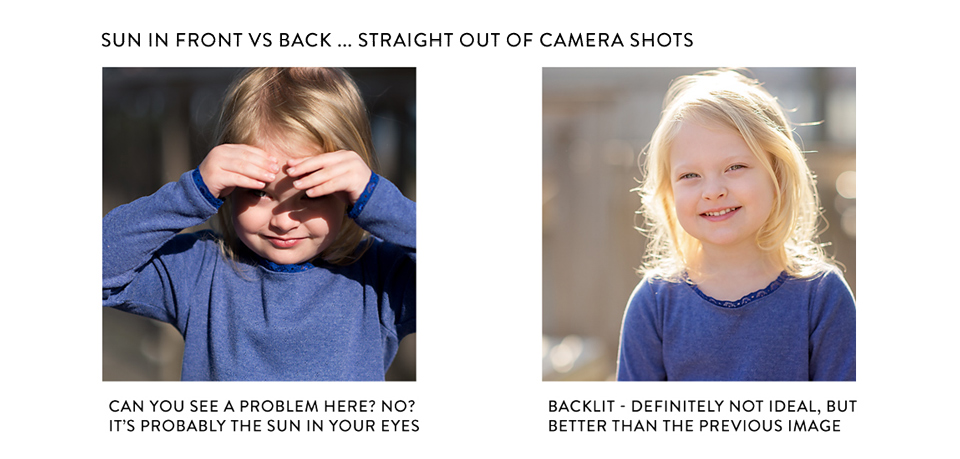
In the following images of my little ragamuffin, notice how we go from incredibly harsh, squinty eyed full sun – to side lit in direct, overhead sun that causes blown out hot spots on the side of her face and nose – to a much nicer backlit image (but the sun is still too high and strong to create that dreamy, soft backlighting I love) – to finally an image in open shade that is evenly lit with pretty details, lovely skin tones and no squinty eyes (that’s just her smile, lol). These four images were taken in the exact same spot, each just rotating the subject in relation to the sun … for the open shade shot I had her step about ten feet back into the shade of a large tree (she was still facing the sun as in the first image, but at the edge of open shade). You also can’t see the details enough here, but the details in the open shade image are tack sharp right down to her smallest eyelash. The details in backlit images can get hazy and not as crisp sometimes (a reflector can help). And the front and side lit photos have so many things wrong with them that I don’t even care about clarity at that point. 🙂 See how much you can make a difference just by repositioning either your subject or your own perspective?

Side note: I often show my clients the example photos showing why middle of the day, bright sun is not when I usually book sessions! 🙂 Please feel free to share this post with your own clients!
3. Find or make shade.
Obviously, if you can find some kind of open shade to take advantage of, this is your best option. Get creative here! You can use the obvious reflector, umbrella, trees, buildings, even the shadow of another person or your own shadow if your subject is small enough. When chasing around my kids on the beach I shot when they either had their backs to the sun or were shielded by daddy. I also shot directly down at them, creating that shade with my own shadow. Be sure if you are using trees for shade that there aren’t any hot spots (too bright areas or dappled sun) coming through and falling on your subject from dappled light.
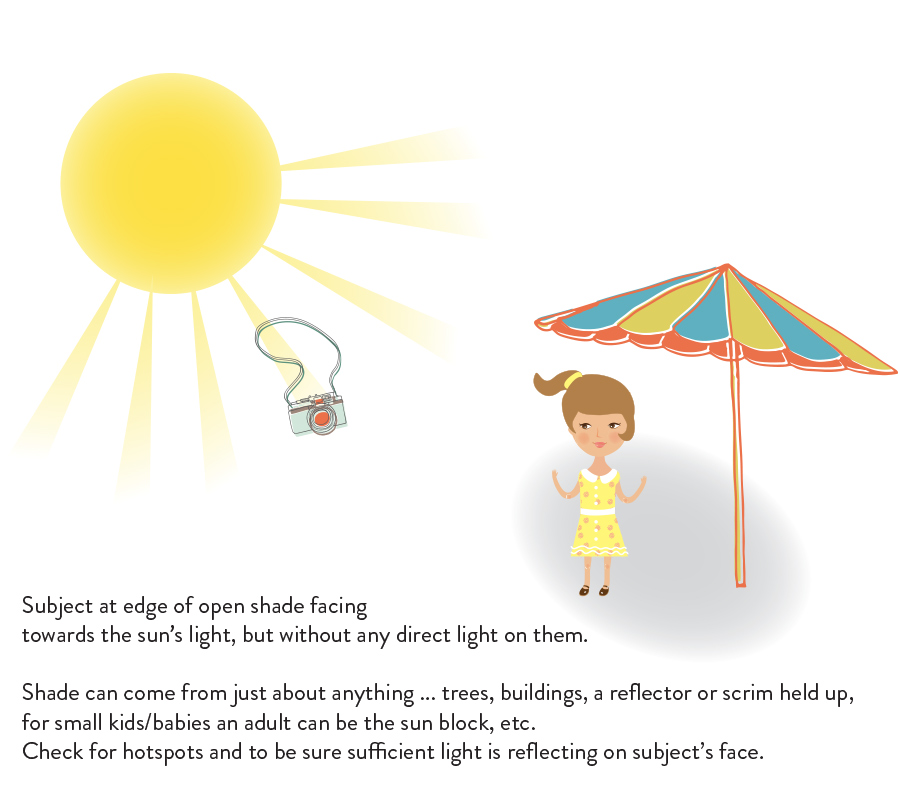
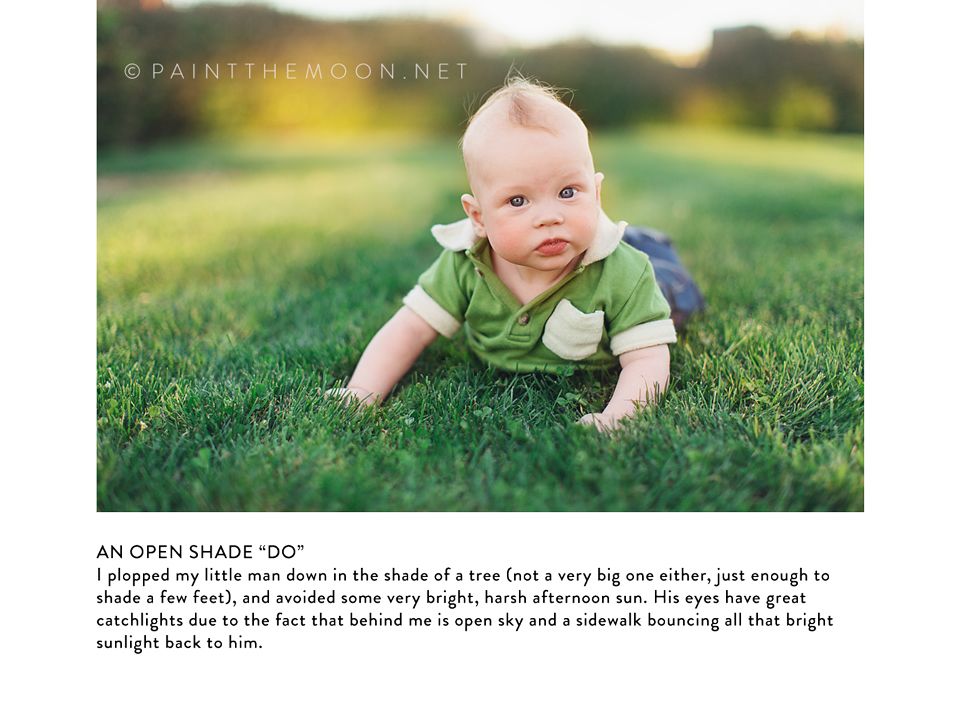
4. Watch for hot spots.
When shooting in bright, overhead sun it’s very important to watch for “hot spots” – where the sun hits and likely blows out your highlights while causing harsh shadows and lines.
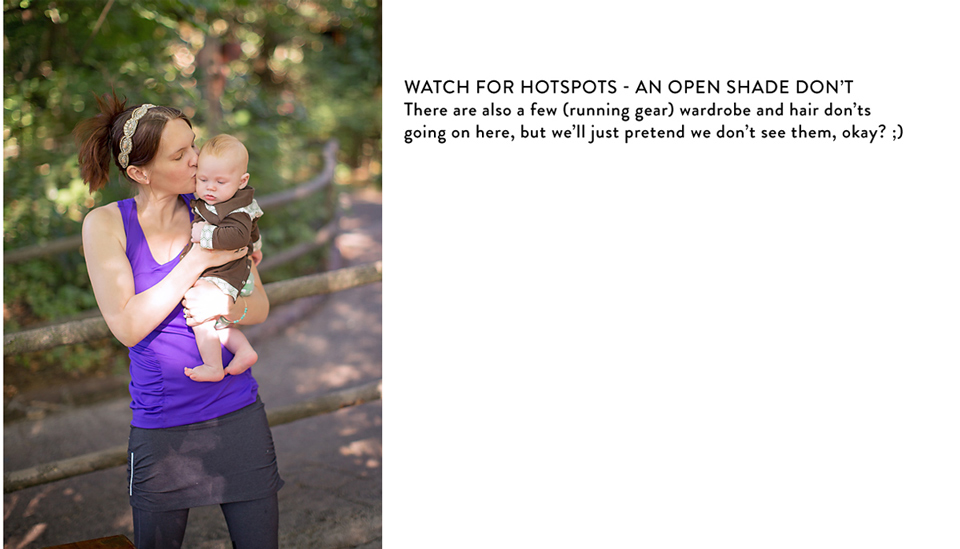
5. Reflect that light.
Use a reflector – natural or carry one with you – to bounce light back on the subject and fill in the shadows. A reflector can be a light colored wall, open sky, an actual reflector, a sidewalk bouncing light back up to your subject, etc. Be sure there is sufficient light falling on your subject, especially if you are capturing a portrait with their eyes looking at you. For example, if you are standing against something like a treed area it would block any light above and behind you from reflecting onto the subject. For reflectors that are super inexpensive and easy to carry around and position yourself (yep, even while shooting one handed) I use this one. This diffuser is also great for softening and shading sunlight.
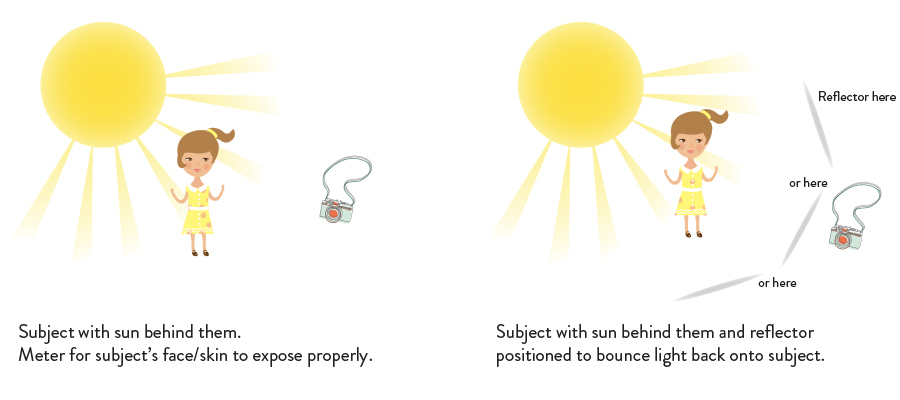

More examples, editing help and tips 6 through 12 – continued in Part Two.


Thanks so much for your posts. Would love to purchase some of your actions. Beautiful photographs! Melissa Hall
I am a beginner at photography. I love all of your posts, freebies & helpful hints. Thanks so much.
I love your site.